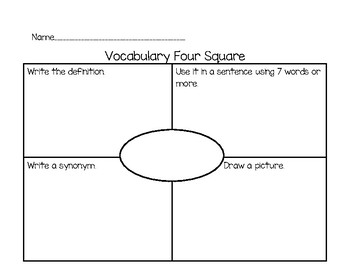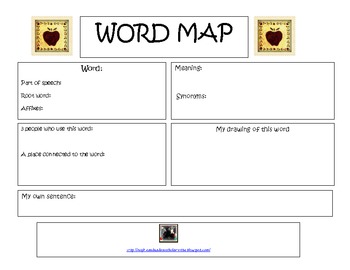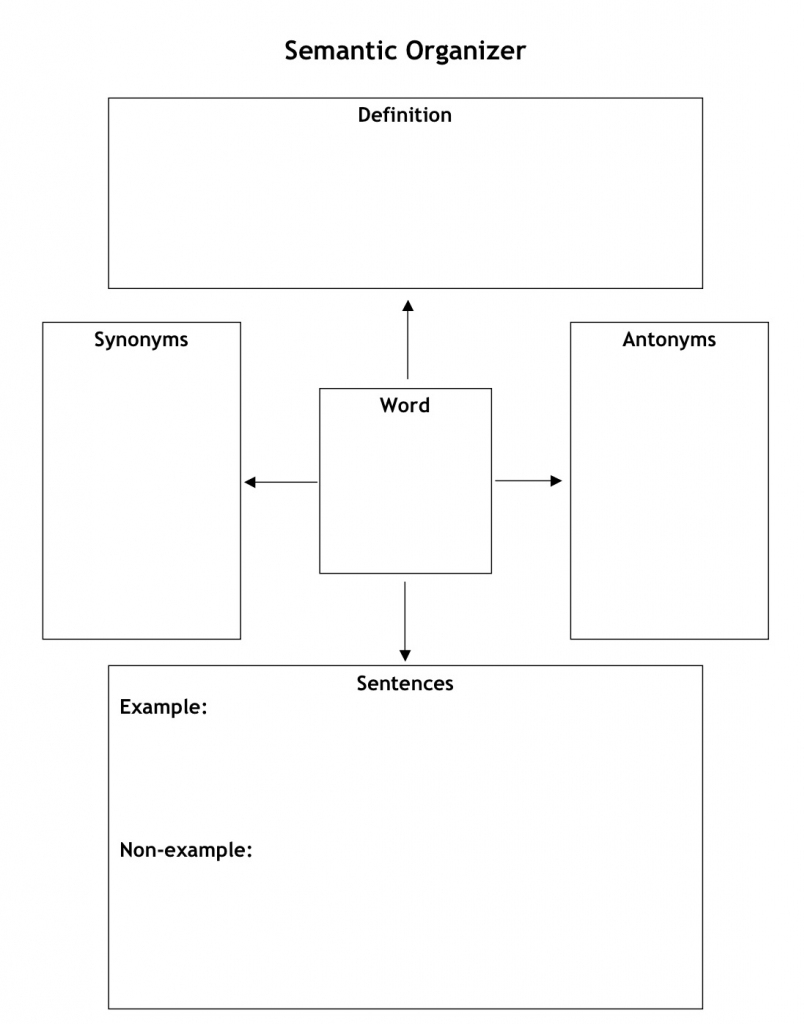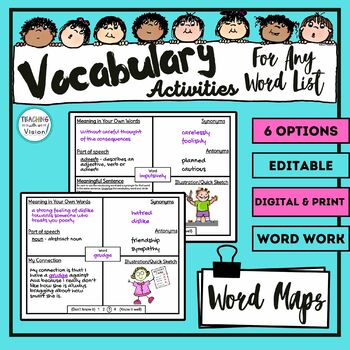

The real photographs are great support for ELL students! They will be able to match the vocabulary words at the top of the page to the photograph of it. There are also real photographs that match the vocabulary words. They love coming up with words to write in their square boxes. They actually look for the features themselves each day.


My students write words with the same word chunk or phonetic feature as the vocabulary word on that page. For instance, I use the box to teach phonics. In addition to the color version of the book, there is a black and white version with empty boxes for students to write in. It is one of 5 books that we created to go with our WORD OF THE DAY OCTOBER CALENDAR. Students engage in immediate practice using the words through collaborative student turn-and-talk activities.This cute MAPS BOOK is great for your social studies unit, and is perfect for teaching VOCABULARY. During this routine, teachers introduce target words with definitions, visual cues, and examples. Teachers use a simple graphic organizer to preteach the meanings of important words in about 5 minutes per word. The five activities described below are effective ways to teach vocabulary for all students, but especially for struggling students, students with learning disabilities, and ELs. Some of Our Favorite Vocabulary Instructional Activities for ALL Content Areas Colorín Colorado provides additional information about selecting vocabulary words to teach ELs. used repeatedly or frequently encountered across domains, andĮLs may require even more careful word selection and extensive vocabulary instruction because they may be learning conversational language and academic language at the same time.essential to understanding the main idea of the text or unit,.When deciding which words to target for explicit instruction, consider words that are Instructional time is precious, and teachers are not able to address every unknown word students might encounter, so careful word selection is key.

#VOCAB WORD MAPS HOW TO#
Each subject has a unique set of vocabulary terms, and students need to know their meanings and how to use them in various contexts. Vocabulary should be taught schoolwide and across all subject areas. This builds students’ breadth and depth of vocabulary knowledge. That is, instruction must be extended over time with opportunities for students to hear, speak, read, and write words in various contexts. Vocabulary instruction must include multiple practice opportunities for using words within and across subjects. Explicit vocabulary instruction includes an easy-to-understand definition presented directly to students along with multiple examples and nonexamples of the target word, brief discussion opportunities, and checks for understanding. In other words, teaching vocabulary provides the “Velcro” for new information to “stick to.” What Research Says About Effective Vocabulary Instruction Did you know that typically, only 5% to 10% of instructional time is devoted to vocabulary instruction, yet students, especially struggling students and English learners (ELs), need between 12 and 14 exposures to words and their meanings to fully learn them (Durkin, 1978/79 Roser & Juel, 1982 Scott, Jamieson, Noel, & Asslin, 2003)? Teaching the meanings of important words before learning new content activates students' background knowledge and prepares them for learning and comprehending.


 0 kommentar(er)
0 kommentar(er)
